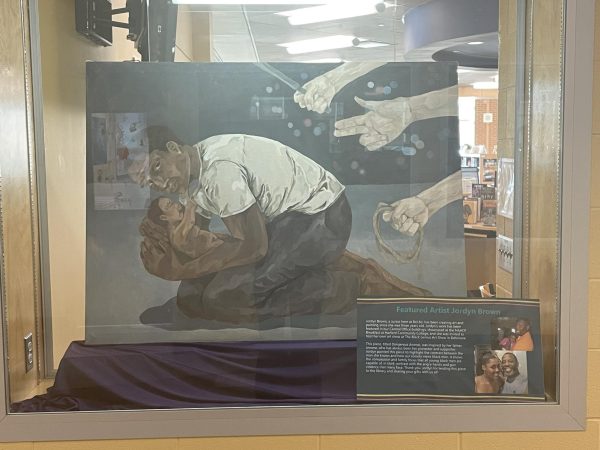Myths From Around The World
September 27, 2016
Throughout much of human history, people all over the world have used myths and legends to explain things that they don’t understand. Although most of these beliefs are no longer widespread today, the majority of their stories are still told and can offer us, as an outsider, a look into what people’s cultures and lives might have been like many years ago.
The Greek and Roman myth of Arachne was told to explain the origin of spiders. In the story, Arachne is a weaver who masters the craft, but instead of being humble, decides to boast about her talent. Because of her hubris, she brags about how she could beat the goddess of wisdom, Athena, in the execution of the skill. With little to no hesitation Arachne challenges the goddess, who is disguised as an old woman, and uses her trade to humiliate the gods and goddesses, causing Athena to become outraged. Although the winner of the contest varies from version to version, in the end Arachne is always turned into a spider for her hubris.
The Greek myth about how Persephone, the daughter of the harvest goddess, Demeter, became Hades wife lends an attempt at reasoning for the change of seasons. In the story, Hades kidnaps Persephone while she is out with her friends, then he takes her to the Underworld to live with him as his queen. Although Zeus, king of the gods, witnesses Hades crime, he does nothing to stop it and even refrains from telling Demeter, who is desperately searching for her daughter. As a result, Demeter makes the Earth barren, starving the people until Zeus agrees to return Persephone to her. Zeus eventually decides that Demeter needs to have her daughter back, but will only return Persephone back to her mother if it can be proven that she is unhappy. When Hades hears of the news, he decides to trick Persephone into eating a pomegranate seed, which will trap her in the Underworld by making her not want to leave. Zeus, having discovered what Hades did to Persephone, decides that during winter and fall she will live in the Underworld, but in spring and summer she will live with her mother, thus explaining the change in weather throughout the year.
The myth of how King of the Norse Gods, Odin, lost one of his two eyes acts as an explanation as to why the god is all knowing. In the tale, Odin travels throughout the land trying to reach the Well of Urd, a well owned by Mimir, a god of wisdom, which which is capable of giving anyone who drinks from it unlimited wisdom. However when the god does reach the well, Mimir refuses to allow Odin to drink from the well without first sacrificing one of his eyes. Odin ultimately decides to give up his eye, knowing the value of the wisdom which he will receive, but, unlike gods of other cultures, is unable to regenerate his limbs and is left permanently unable to see out of his one eye.
In the myth of Houyi and Chang’e, the Chinese hoped to explain why there is only one sun in the sky. The story tells of how Houyi, an immortal god, is asked by YuanshiTianzun, the Jade Emperor or Ruler of the Heavens, to discipline his sons after they transform themselves into ten suns that will scorch the Earth. Houyi, fearful of the transformation, decides to kill the emperor’s ten sons, accidentally leaving one alive that would later act as the one and only sun. When the king hears of what was done by Houyi, he is outraged, and banishes not only Houyi for killing his sons, but also Chang’e, Houyi’s wife, to Earth. Once on Earth the couple is expected to live as mortals and, fearing death, steal an immortality elixir from the Immortal Queen Mother of the West. Although it is debated among renditions if Chang’e was forced to drink the entire elixir or if she drinks it out of choice, in the end, Chang’e floats into the sky as an immortal being, but, because she was banished from heaven, is sent to live within the moon for eternity.
The Chinese myth about how Nu Wa created humans and animals tells of a snake-like woman who crafted the creatures of the Earth within a week. In the myth she creates humans on the seventh day, using yellow clay and water to mold humanity in her form and, because of her fascination for them, quickly decides to craft many more. However, after the job becomes too strenuous, she covers a rope in the clay and flings it around, leaving puddles of mud which would later become people themselves. As a result, the upper class became those she hand-crafted and the mud spots became the lower class. This myth also states that those who are disabled were the clay people that she created that had been damaged by the water she had used.
The Japanese myth of Izanagi and Izanami is a creation myth about two gods who marry and create the islands of Japan, the wind and sea, the ocean, its mountains and rivers, and trees. However, after Izanami gives birth to the fire god, Kagutsuchi, she dies and is sent to live in the underworld. Out of sadness, Izanagi goes into the underworld to retrieve his dead wife, but upon reaching her is horrified by her now zombie-like appearance and fleas. He then decides to trap her in the underworld forever using a boulder. Out of anger, Izanami declares she will kill a thousand people a day. To counteract this, Izanami states he will create one-thousand-five-hundred people a day.
While many of these myths are not the most widespread stories of all time, I hope they provide you with some entertainment and food for thought. Around the world people’s beliefs are always changing, their history offering insight on the culture of ancient civilizations that helped shape the way many people live today and the restless and unrelenting spirit of humanity’s quest for knowledge.











